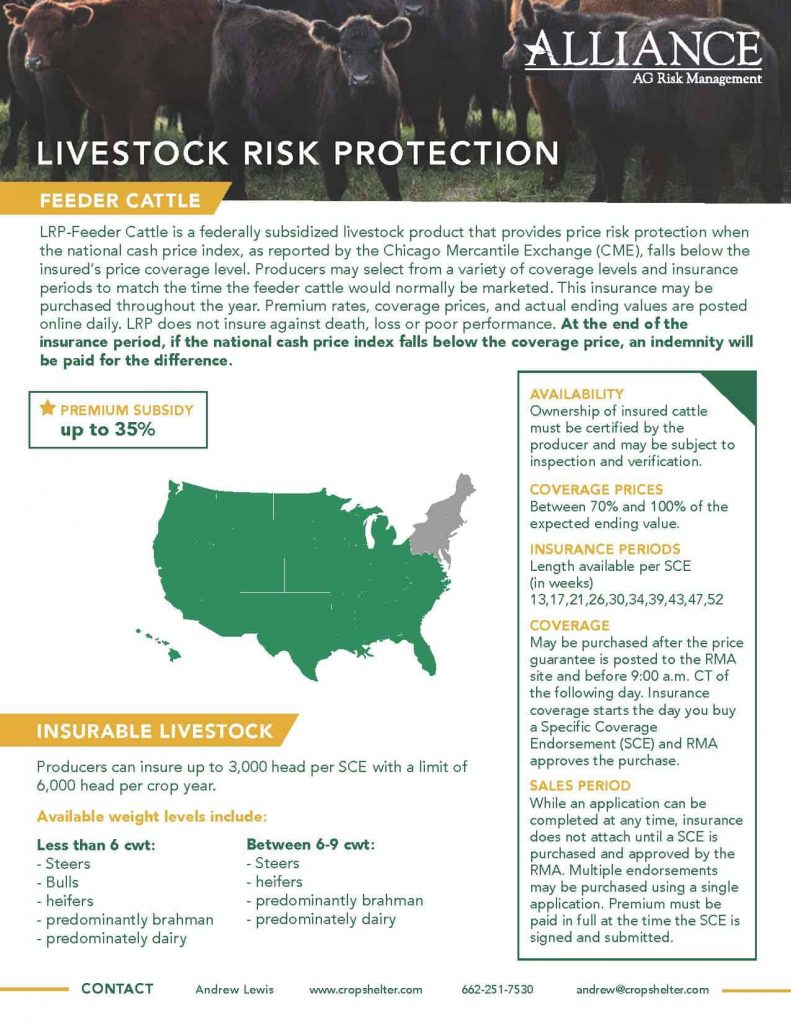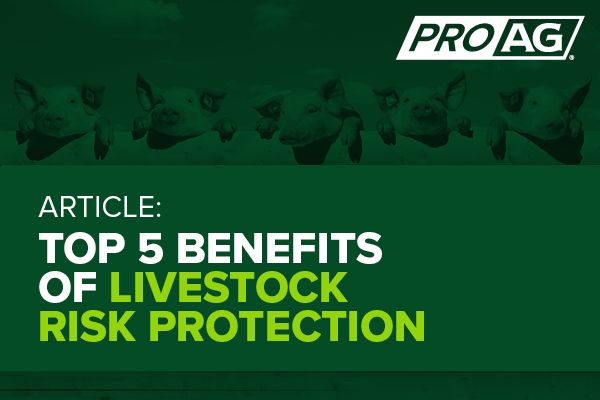Recognizing Livestock Risk Defense (LRP) Insurance: A Comprehensive Guide
Browsing the world of animals risk security (LRP) insurance policy can be an intricate undertaking for many in the agricultural industry. From how LRP insurance works to the different coverage options readily available, there is much to discover in this thorough overview that might potentially shape the way livestock manufacturers come close to threat monitoring in their companies.

How LRP Insurance Coverage Works
Occasionally, understanding the technicians of Livestock Risk Protection (LRP) insurance policy can be complicated, yet damaging down how it works can supply quality for herdsmans and farmers. LRP insurance is a danger management device created to protect animals manufacturers against unforeseen rate declines. The plan enables manufacturers to set an insurance coverage level based upon their certain needs, picking the number of head, weight variety, and insurance coverage rate. Once the plan remains in place, if market value drop below the protection cost, manufacturers can sue for the distinction. It is necessary to keep in mind that LRP insurance policy is not an income warranty; instead, it focuses entirely on rate risk security. The protection duration usually varies from 13 to 52 weeks, providing flexibility for producers to select a duration that lines up with their manufacturing cycle. By utilizing LRP insurance coverage, herdsmans and farmers can alleviate the economic threats related to fluctuating market prices, making sure better stability in their operations.
Qualification and Protection Options

When it comes to protection alternatives, LRP insurance provides manufacturers the flexibility to pick the coverage level, coverage period, and endorsements that best match their threat management requirements. Insurance coverage degrees typically range from 70% to 100% of the anticipated finishing worth of the insured animals. Producers can likewise pick insurance coverage durations that align with their production cycle, whether they are insuring feeder livestock, fed livestock, swine, or lamb. Recommendations such as price threat defense can further tailor protection to secure versus damaging market fluctuations. By comprehending the eligibility requirements and insurance coverage options available, animals manufacturers can make enlightened choices to manage risk properly.
Pros and Cons of LRP Insurance Policy
When evaluating Animals Threat Security (LRP) insurance, it is essential for livestock producers to weigh the disadvantages and advantages integral in this danger management device.

One of the key benefits of LRP insurance policy is its capacity to supply protection against a decrease in livestock costs. Furthermore, LRP insurance provides a level of versatility, enabling producers to personalize insurance coverage degrees and policy durations to suit their specific requirements.
However, there are also some drawbacks to consider. One constraint of LRP insurance is that it does not shield versus all kinds of threats, such as condition episodes or all-natural calamities. Premiums can sometimes be expensive, particularly for producers with huge livestock herds. It is crucial for producers to thoroughly evaluate their private threat exposure and monetary situation to figure out if LRP insurance coverage is the best threat management device for their procedure.
Understanding LRP Insurance Premiums

Tips for Making Best Use Of LRP Advantages
Making best use of the benefits of Livestock Threat Protection (LRP) insurance requires calculated preparation and aggressive threat administration - Bagley Risk Management. To take advantage of your LRP coverage, consider the following pointers:
On A Regular Basis Assess Market Conditions: Stay notified regarding market visit homepage fads and cost changes in the livestock market. By keeping track of these elements, you can make educated decisions about when to buy LRP protection to protect versus potential losses.
Establish Realistic Insurance Coverage Levels: When selecting coverage degrees, consider your production expenses, market value of livestock, and potential dangers - Bagley Risk Management. Establishing sensible protection degrees ensures that you are appropriately shielded without paying too much for unneeded insurance
Expand Your Insurance Coverage: Rather than counting exclusively on LRP insurance, consider diversifying your threat monitoring methods. Incorporating LRP with various other risk monitoring devices such as futures contracts or choices can offer comprehensive insurance coverage against market unpredictabilities.
Testimonial and Change Coverage Frequently: As market conditions transform, occasionally evaluate your LRP protection to guarantee it lines up with your current danger exposure. Readjusting protection degrees and timing of acquisitions can assist maximize your danger security technique. By adhering to these suggestions, you can make best use of the benefits of LRP insurance and secure your livestock operation against unanticipated risks.
Final Thought
Finally, animals risk security (LRP) insurance coverage is a valuable device for farmers to take care of the financial threats connected with their animals operations. By understanding how LRP functions, qualification and coverage choices, as well as the advantages and disadvantages of this insurance coverage, farmers can make informed choices to secure their incomes. By thoroughly thinking about LRP costs and executing strategies to optimize benefits, farmers can alleviate prospective losses and guarantee the sustainability of their operations.
Livestock producers interested in acquiring Animals Risk Defense (LRP) insurance coverage can discover an array of qualification criteria and protection choices tailored to their specific livestock procedures.When it comes to protection choices, LRP insurance provides producers the versatility to select the insurance coverage degree, insurance coverage duration, and recommendations that best match their danger monitoring needs.To understand the complexities of Livestock Threat Defense (LRP) insurance coverage fully, understanding the factors influencing LRP insurance coverage premiums is critical. LRP insurance policy costs are figured out by numerous components, consisting of the protection level picked, the anticipated cost of livestock go to my blog at the end of the insurance coverage duration, the type of animals being insured, and click site the size of the protection period.Evaluation and Change Coverage Consistently: As market problems transform, regularly evaluate your LRP coverage to ensure it straightens with your existing risk direct exposure.